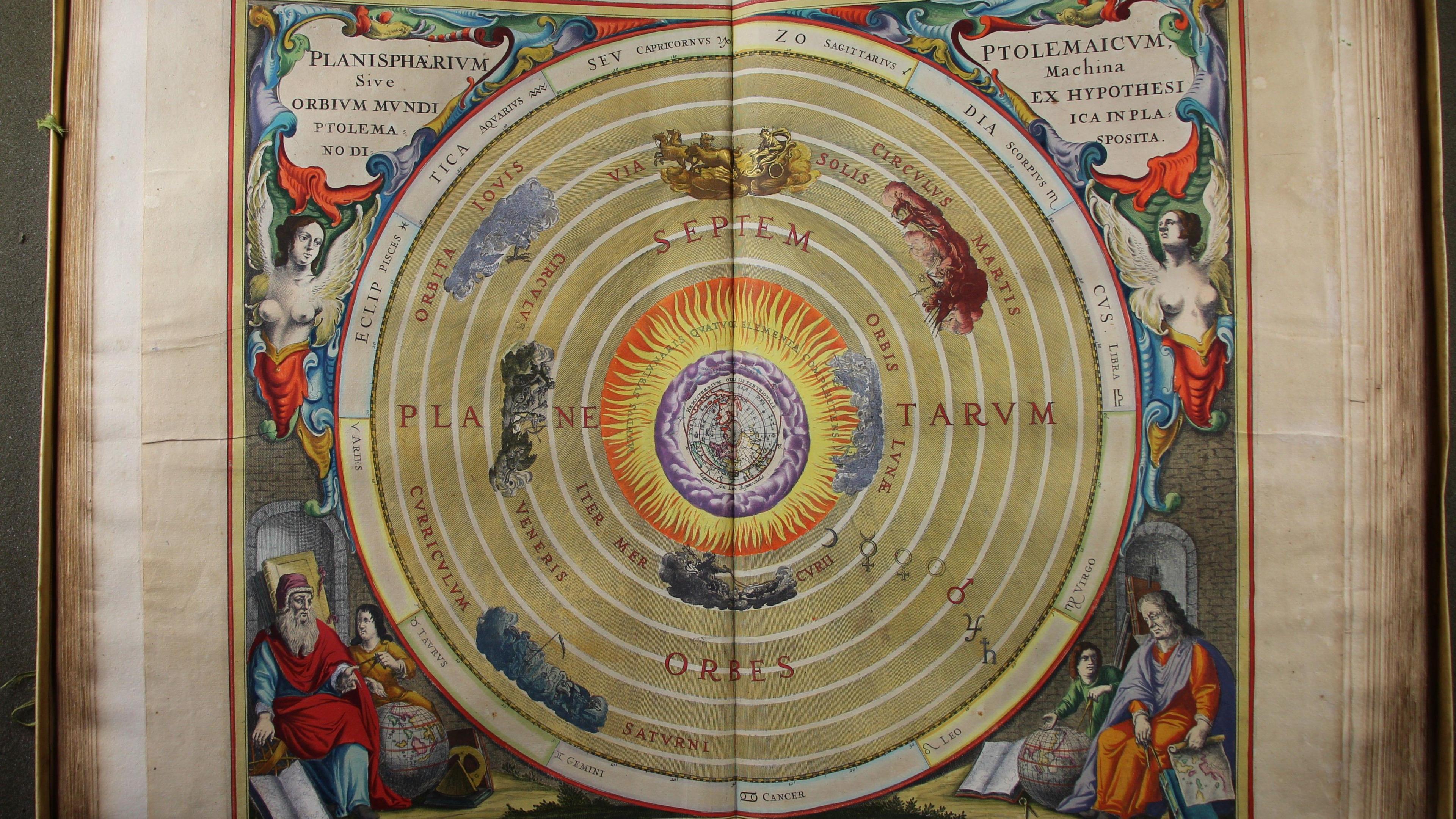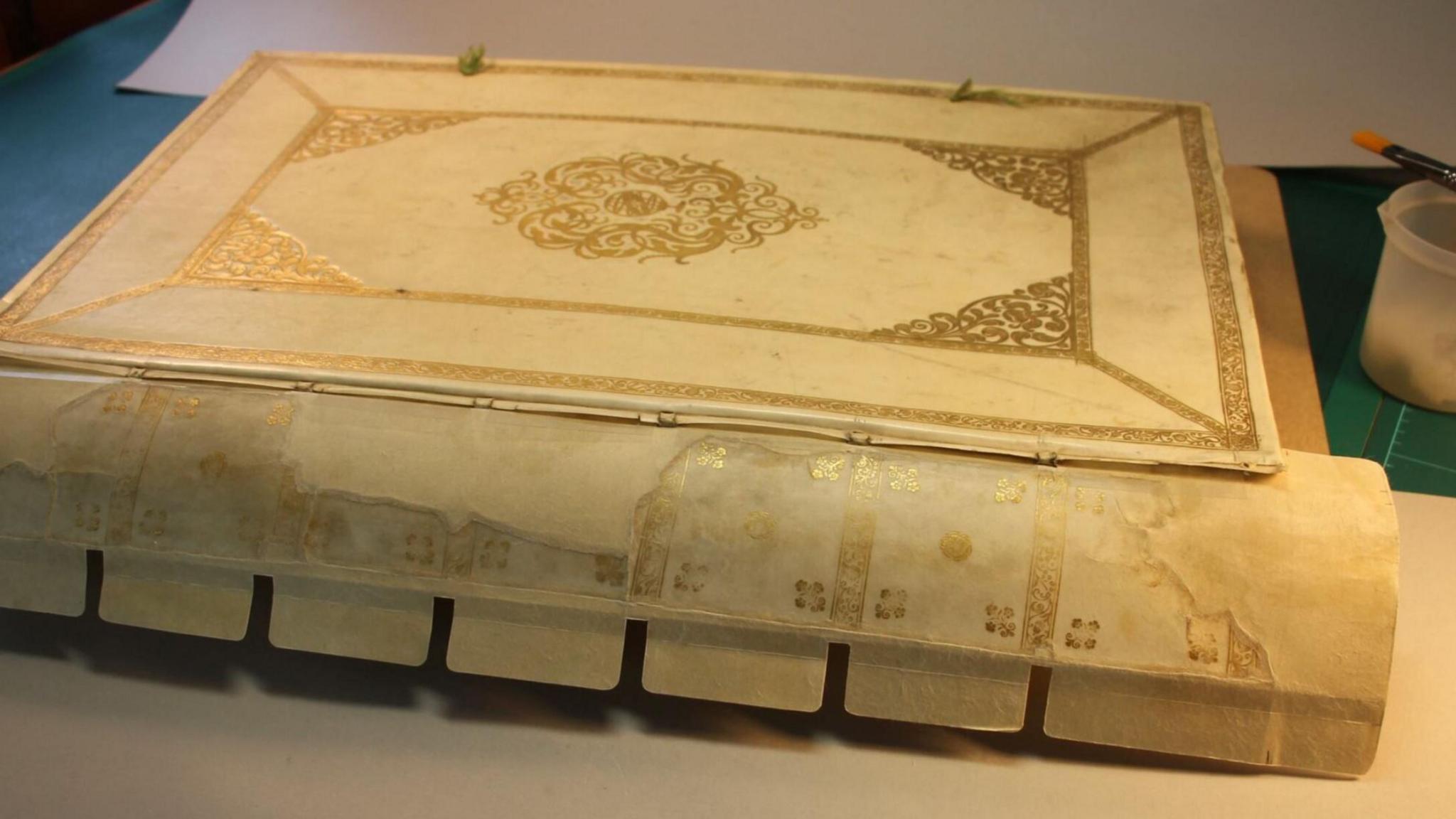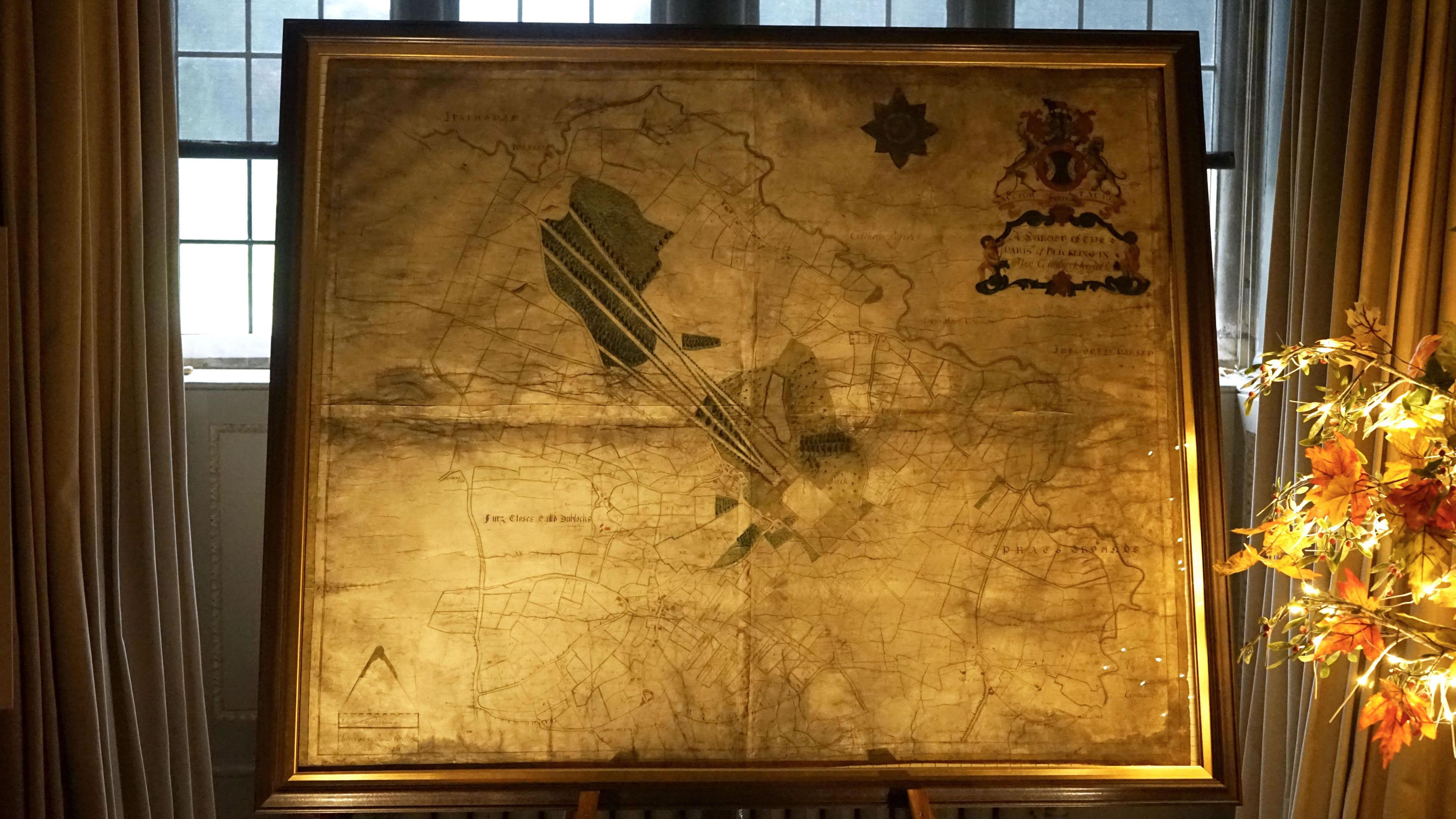'Masterpiece' 17th Century atlas goes on display

Pages of the Star Atlas that date back almost 400 years have been carefully pieced back together and repaired
- Published
One of the world's "finest and rarest" 17th Century atlases will be put on show for the first time, after experts spent three months restoring it.
The Harmonia Macrocosmica by Andreas Cellarius - described as a "masterpiece of Dutch cartography" by the National Trust - will be available to see at Blickling Hall in Norfolk.
Known as the Star Atlas, it has been at Blickling since the 1700s - and has inspired this year's Journey Through the Stars Christmas tour at the stately home.
"The stunning illustrations leave no doubt that Cellarius and his contemporaries were just as awestruck by the night sky as we are," said Blickling librarian Rebecca Feakes.

Before the restoration, the same pages can be seen to be coming away and the edges were tattered
"This large folio was meant to be displayed and celebrated for its size and opulence," she said.
"Owning it told the world about your status and intelligence."
Only about 20 copies of the atlas, published in 1661, were thought to have survived worldwide.
It was one volume in a lavish set of 14 atlases by Dutch mapmakers found in the Blickling library, with cartographers in Belgium and the Netherlands renowned for their elaborate maps.
It was thought the German-born author, Andreas Cellarius - a teacher and then school rector who had a planet named after him - may have created the atlas at the suggestion of his Amsterdam-based publisher, Johannes Janssonius.

The large folio was embossed in gold and had to have its spine repaired as part of the conservation work
The atlas described star movements, constellations of the northern hemisphere and planetary models as understood in the 1600s.
It was created as thinking shifted from the belief that the Earth was at the centre of the universe, to the concept of the sun being at the solar system's core.
The book is one of 10,000 items in Blickling's library, which due to its size was still being catalogued and studied today.
The atlas's conservator said pages were torn and crumpled and it was "almost impossible to handle" due to its fragility, and was unable to be displayed.
Book conservator Clare Prince said: "Beautiful, hand-coloured, engraved plates had become loose and were at risk of further damage."
It was repaired using Japanese paper, while parts were resewn and the spine reattached.
It will now go on display in Blickling's Upper Ante, alongside reproductions of some illustrations.
Listen: One of the world’s rarest star atlases is going on public display at Blickling Hall.
Get in touch
Do you have a story suggestion for Norfolk?
Follow Norfolk news on BBC Sounds, Facebook, external, Instagram, external and X, external.
Related topics
- Published21 September 2024
